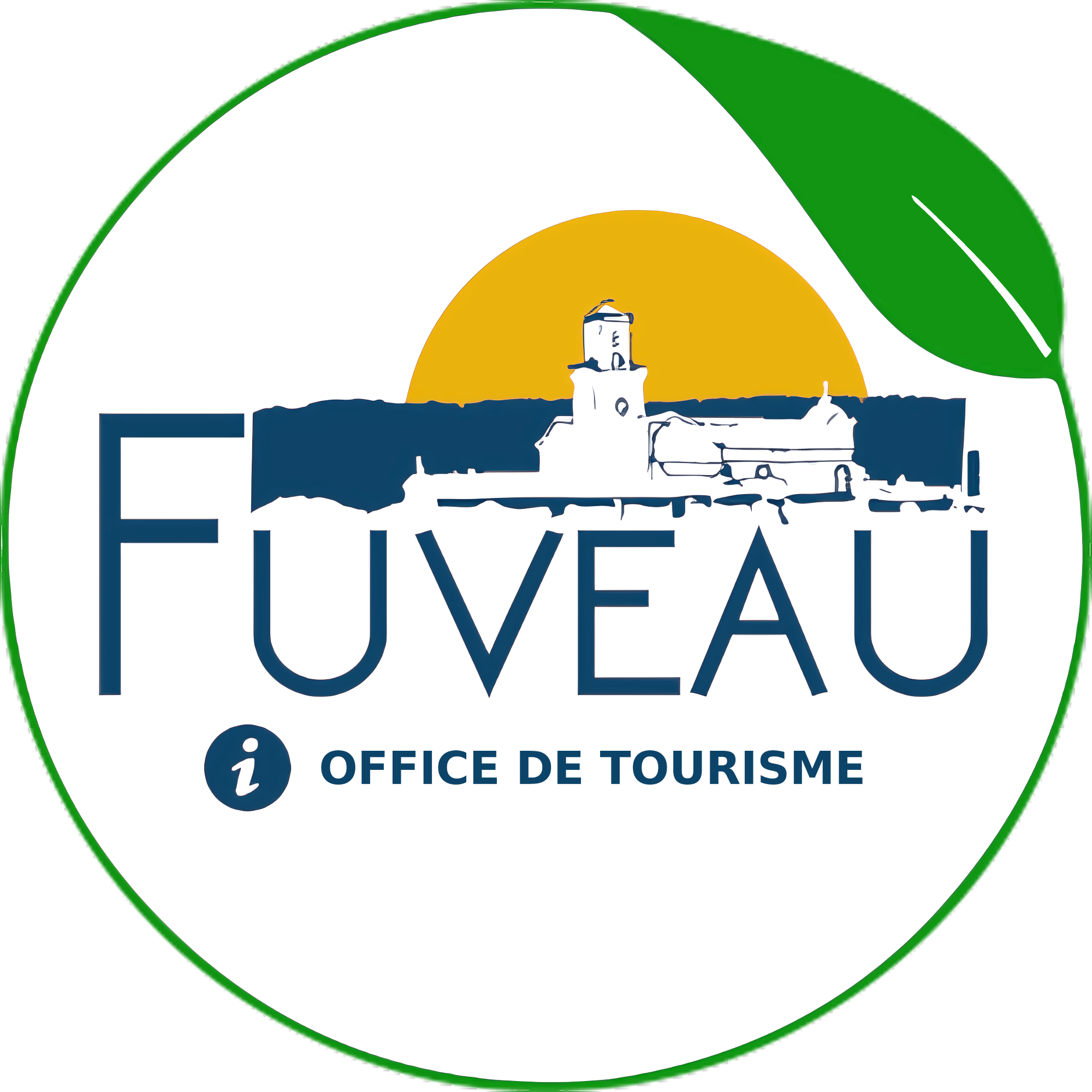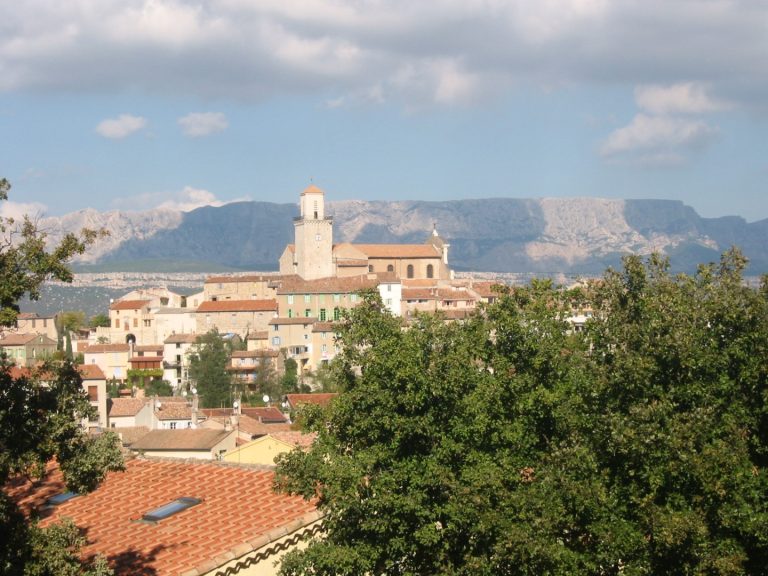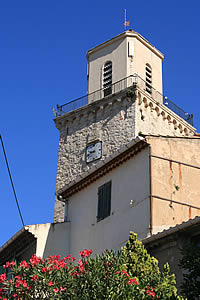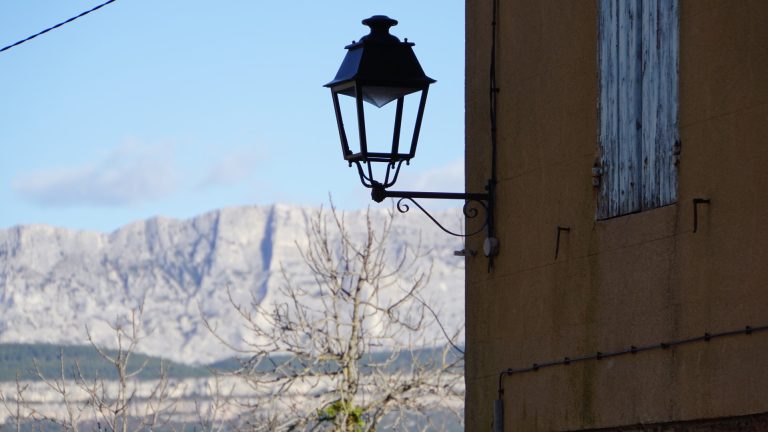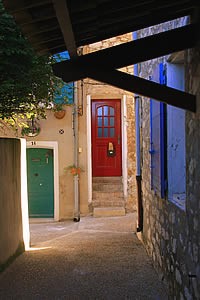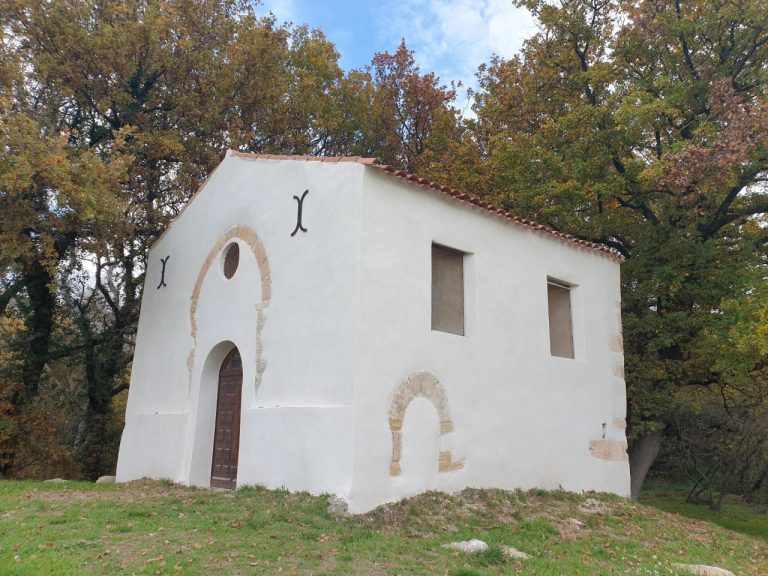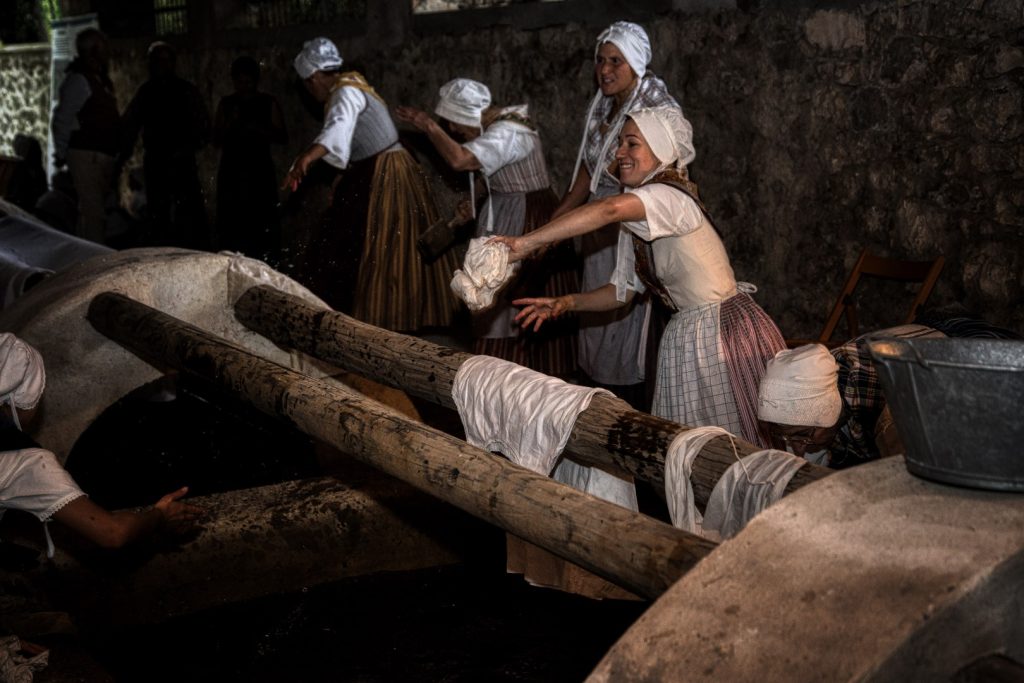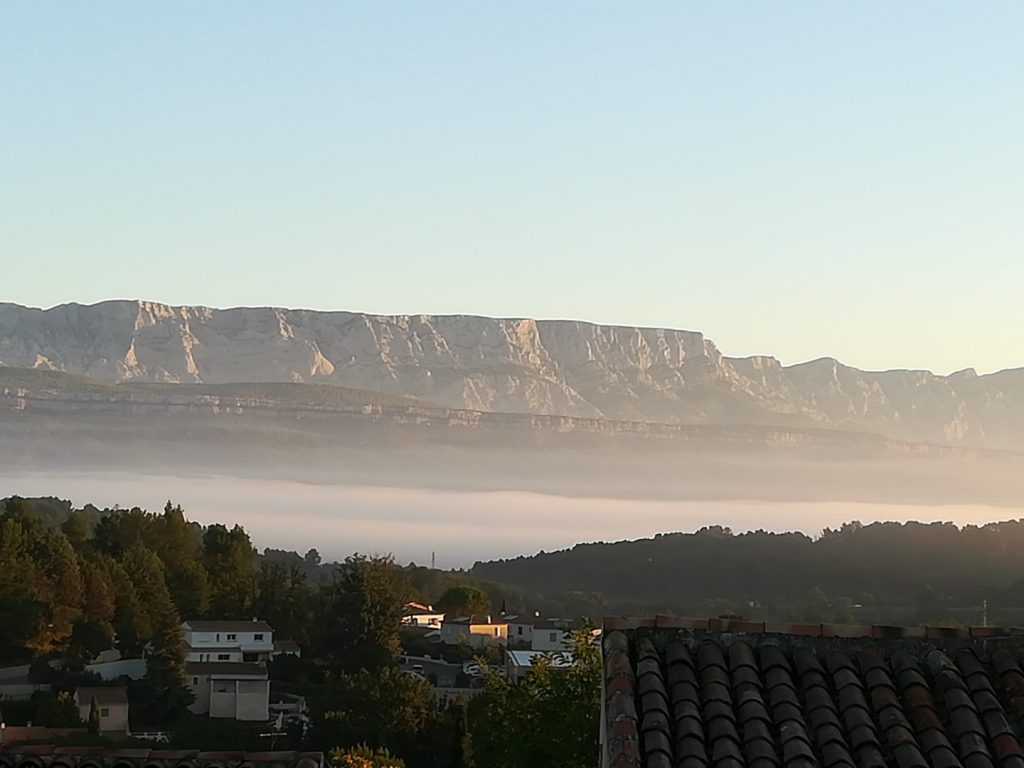Heritage
Fuveau, a Provençal village
The charming old village of Fuveau sits on a hilltop 16 kilometers southeast of Aix-en-Provence, at the foot of Mount Sainte-Victoire. Fuveau is a typically Provençal village, with its steep alleys, superb and impressive neo-Gothic church, heavily inspired by the Italian baroque style, and Cours Victor Leydet, the village’s main square, lined with plane trees.
Fuveau is spread over 30km², has over 10,000 inhabitants and is a great place to live. The provençal village spreads around a medieval city centre, where you’d expect to run into a mythical figure from Provençal history any moment… (And imagination can actually turn into reality!)
The people from Fuveau, also called “Fuvelains” and “Fuvelaines”, know that their Provençal village is a lively and friendly place. In this municipality, agricultural areas have successfully mixed with traditional, cultural places. The hills and other green spaces have been relatively well protected and the mountain bike trails and other outdoor leisure facilities are free of charge and available to all.
While Fuveau’s founding dates back to much older times, its name appears in writing for the first time at the end of the 11th century. The village was first established on SAINT-MICHEL HILL, where a magnificent Roman-style chapel with massive buttresses still remains. In the 10th century, the village inhabitants colonised the ROCAOUDO peak, where the village church currently sits. The old districts were built around the church and the old PEYSONNEL castle, residence of the seigneurs of Fuveau.
A stroll through the narrow and winding alleys of the village will let you witness its medieval history. The BASSAC GATE, one of the last remains of this era, has a 1.5-metre thickness and provided a zigzag entrance to the village from its southern side.
At the back of the current church, a curious wall from the old church remains, which has a stained-glass window blocking the cutout through which seigneurs attended services without leaving their residence. The imposing and majestic church building standing here today dates back to 1854 and was heavily inspired by the Italian baroque style. The square in front of the church houses a statue of Charles Verminck (Sr), the first schoolteacher of the village, whose son, benefactor of the village and shipowner in the 19th century, founded the great chartered companies of Marseille.
The lower part of the village and its large boulevards lined with plane trees largely date back to the 19th century. The village expanded with the increasing mining production. Cours Victor Leydet, Boulevard Emile Loubet and Boulevard Célestin Barthelemy were all built during this period.
The old lavoir, or wash-house, at the edge of the village, was a life-changing invention for the village’s “lavandières”, or wash-women. It was used for more than a century, until 1968. The lavoir used the groundwater discharge system, which was developed to stop the water from flooding the mine galleries.
Following the village’s expansion, a railway line was established between Fuveau and Valdonne (located in the municipality of Saint-Savournin), so the miners wouldn’t have to walk the 8-kilometer road to the coal mines every day.
In addition to its historical city centre, Fuveau has many other places of interest, like the above-mentioned SAINT-MICHEL CHAPEL, the old DOVECOTE, SAINT-JEAN DE MELISSANE CHAPEL, SAINT-ROCH CHAPEL, the GRAND’BASTIDE and PUGET castles and CHATEAU L’ARC. The dovecote, located next to SAINT-MICHEL CHAPEL, is an old windmill and seigneurial vestige, which was destroyed by a storm in 1839.
SAINT-JEAN DE MELISSANE CHAPEL, attested from the 16th century, is a remnant of that same period. It is closed to the public, but opens every 24th June for a special service in Provençal. SAINT-MICHEL CHAPEL, built in the 11th century, is another place of worship. It was rebuilt, redesigned and reinforced multiple times, but its current appearance stems from the 1677 restoration.
The beautiful CHATEAU L’ARC is another one of the village’s gems. Established by the viscounts of Marseille in the 11th century, it was destroyed by armed gangs in the 14th century and rebuilt at its current location by the Agoult family in 1620. A hot spot for Provençal nobility, it was shelter to several members of the de France family during the occupation. The painter Bernard Buffet was one of its last distinguished owners.
Important figures:
During the 19th and 20th centuries, many celebrities visited Fuveau for inspiration or simply to enjoy the peace and panoramas. Eugène Long, friend and follower of the famous French writer Frédéric Mistral, was born in the village. Paul Cézanne, the world-renowned painter, set up his easel in Fuveau and painted the masterpiece “Vue de Sainte-Victoire”, which is currently on display at the Indianapolis Museum of Art (USA). Henri Verneuil chose the village and its surrounding countryside as the backdrop for scenes in his movie “Le Boulanger de Valorgue” (The Baker of Valorgue), starring the French actor Fernandel, who decided to stay in Fuveau for the occasion. Moreover, Charles Faure Vincent, or “Vincent Flo”, famous for his operettas, let Fuveau take centre stage in his heart. Other noteworthy figures born in Fuveau include the painter Barthélémy Niollon and the adventurer and explorer Marius Moustier, who discovered the source of the Niger before Stanley.
A Unique Panorama
From the top of Rue Rondet and several other hilltops in the village, you will have a magnificent panoramic view of Mount Sainte-Victoire and the Cengle plateau.
Sainte-Victoire stretches 18 kilometers in length and its striking and stately south face peaks at 1011m above sea level. From the village, you can see the mountain in its entirety and you will be able to see both the Pic des Mouches and the immense Croix de Provence, the 19-metre metal cross towering over the priory at 942m. From the south side of the village, standing in the Bassac gate, the view opens up to the Etoile and Sainte-Baume massifs and Mount Olympe.
Things to Do
In addition to this rich architectural and cultural heritage, our village possesses a large number of leisure facilities. Visit the “Musée des Papillons” (Butterfly Museum) and discover some of the butterfly species on display, for instance, or be transported to another world on a visit to the Musée Provençal des Transports (Provençal Transport Museum) and its spectacular locomotives. Or take the whole family to discover “Le Nouveau Monde” (The New World), an educational farm. If you’re more into active ways of holidaying, our golf course, horse-riding centres and sports clubs are open year-round.
History, anecdotes and old photos available on Jean-François Roubaud’s personal website.
